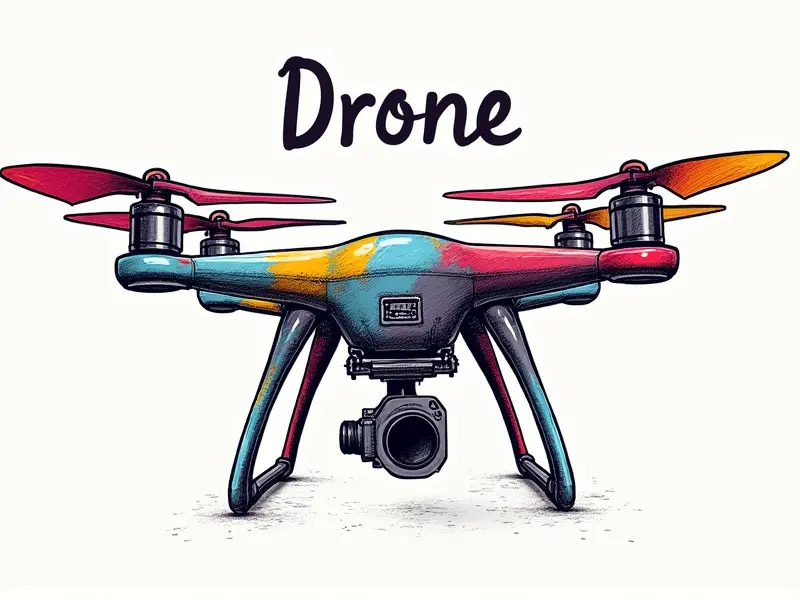iFlight racing drone setup

iFlight Racing Drone Setup: A Comprehensive Guide
Setting up an iFlight racing drone is a crucial step in ensuring top-notch performance. This guide will walk you through the essential steps, quick start tips, and advanced configuration options to help you get your drone ready for racing or high-flying adventures.
How to Set Up Your iFlight Racing Drone
The process of setting up an iFlight racing drone involves several key steps that ensure optimal performance. Here’s a breakdown of the essential setup procedures:
- Install Propellers and Motors: Carefully attach the propellers to each motor, ensuring they are correctly aligned.
- Connect Flight Controller: Connect your flight controller to the drone frame securely. This is crucial for proper communication between components.
- Battery Installation: Insert the battery into the designated slot and ensure it’s properly seated.
- Tuning Receiver: Configure your receiver settings according to the manufacturer's instructions, ensuring a strong signal connection.
Quick Start Guide: iFlight Racing Drone Setup
If you're short on time and need a fast way to get started with your iFlight racing drone, follow these quick steps:
- Initial Power-Up: Turn the power on and observe any LED indicators for initial setup status.
- Firmware Update: Check if there are firmware updates available for your flight controller. Install them to ensure compatibility and performance improvements.
- Rudder Calibration: Calibrate the rudder or yaw control to avoid any drifting issues during flight.
Mastering iFlight Drone Configuration
To truly master your iFlight racing drone, you need to delve into advanced configuration settings. This includes tuning parameters such as:
- PID Tuning: Adjust the Proportional (P), Integral (I), and Derivative (D) values for better flight stability.
- Gyro Sensitivity: Fine-tune your gyro sensitivity to match your flying style and environmental conditions.
- Battery Monitor Settings: Configure battery monitoring thresholds to alert you when the power is low, ensuring safe landings.
Optimal Settings for iFlight Racing Drones
To achieve optimal performance in racing scenarios, it’s essential to fine-tune your drone settings. Consider these recommendations:
- Frame Stiffness: Ensure your frame is rigid enough to handle high-speed maneuvers without flexing.
- Motor RPM: Adjust motor speed parameters for maximum efficiency and performance.
- PWM Signal: Optimize PWM signal strength for precise control over each component.
iFlight Drone Setup Tips & Tricks
Here are some valuable tips to help you get the most out of your iFlight racing drone setup:
- Use Quality Components: Invest in high-quality propellers, batteries, and other components for reliable performance.
- Regular Maintenance: Keep your drone clean and conduct regular maintenance checks to prevent unexpected failures during races.
- Practice Flight Modes: Experiment with different flight modes to understand their unique characteristics and benefits.
Tuning Your iFlight Racing Drone
Tuning is a critical aspect of maximizing your drone’s performance. Here are some key areas to focus on when tuning:
- Throttle Curve Adjustment: Customize the throttle curve for smoother takeoffs and landings.
- Gyro Damping: Adjust gyro damping settings to eliminate unwanted vibrations and improve stability during high-speed maneuvers.
- ESC (Electronic Speed Controller) Calibration: Calibrate ESCs to ensure consistent motor performance under varying conditions.
Essential Steps for iFlight Drone Setup
The following steps are crucial when setting up your iFlight racing drone:
- Inspect Components: Before assembly, inspect all components for any damage or defects.
- Frame Assembly: Assemble the frame according to manufacturer specifications to ensure structural integrity.
- Wiring Connections: Double-check all wiring connections to prevent any loose wires that could cause malfunctions.
Fast Track iFlight Drone Installation
If you’re in a hurry and need your drone ready as soon as possible, follow this streamlined installation process:
- Rapid Assembly: Assemble the frame quickly but carefully to avoid skipping any critical steps.
- Quick Calibration: Perform basic calibrations for immediate flight readiness.
- Brief Test Flight: Conduct a short test flight to ensure everything is functioning correctly before proceeding with full setup.
Beginner's Guide to iFlight Drone Setup
New users often find the process of setting up an iFlight racing drone overwhelming. This guide offers simplified instructions for beginners:
- User-Friendly Interface: Familiarize yourself with the user-friendly interface provided by the flight controller.
- Step-by-Step Instructions: Follow step-by-step guides available online or in manuals to avoid confusion during setup.
- Practice and Experiment: Spend time practicing basic maneuvers before attempting more complex ones.
Ultimate iFlight Racing Drone Tuning
To achieve the ultimate performance from your iFlight racing drone, focus on these advanced tuning techniques:
- Detailed PID Adjustment: Fine-tune each parameter within the PID settings for precise control and stability.
- ESC Firmware Updates: Keep ESC firmware up-to-date to take advantage of new features and performance improvements.
- Sensor Calibration: Regularly calibrate sensors to ensure accurate readings and optimal response times.
Easy iFlight Racing Drone Calibration
Calibration is an essential part of maintaining your drone’s performance. Here are some simple calibration procedures:
- Magnetometer Alignment: Align the magnetometer to ensure accurate heading and orientation data.
- Gyro Zeroing: Perform gyro zeroing regularly to eliminate drift and improve stability during flight.
- Battery Voltage Check: Verify battery voltage readings for accuracy, ensuring you have reliable power monitoring.
By following these guidelines and tips, you can ensure that your iFlight racing drone is set up perfectly for optimal performance in any scenario. Happy flying!

